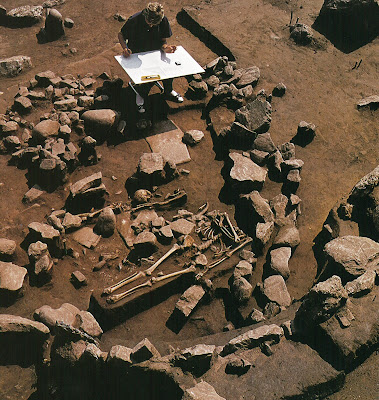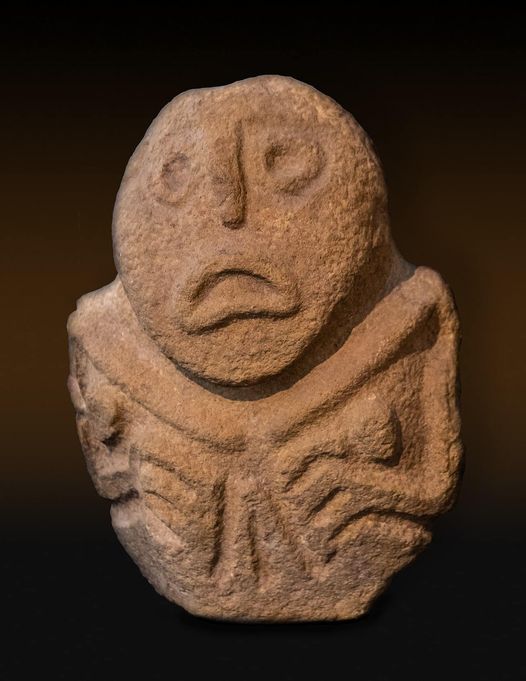The Praroditeljka, also known as the “Foremother,” is a remarkable statue from the prehistoric site of Lepenski Vir, Serbia, dated to approximately 6300-5900 BC. This ancient artifact was skillfully carved from a round sandstone cobble found along the riverbanks. Discovered in 1966, the statue stands at an impressive 51 cm by 39 cm (20 in by 15 in), and it still bears traces of its original red coating pigment, a testament to the artistry and cultural significance of its creators.
Lepenski Vir is a site of immense archaeological importance, with its chronology spanning from about 9500/7200 BC to 5500 BC. The latest radiocarbon and AMS data have enabled researchers to divide this timeline into distinct periods: Early–Middle Mesolithic, Late Mesolithic, Transition, and Neolithic. Each period represents significant developments in the lives of the people who inhabited this region.
The Significance of the Praroditeljka Statue

The Praroditeljka statue is a key piece in understanding the cultural and artistic expressions of the Lepenski Vir civilization. Its detailed craftsmanship and the remaining red pigment suggest it had a significant role, possibly linked to religious or societal rituals. As a “Foremother,” the statue might represent fertility, ancestry, or a deity worshiped by the community.
Understanding Lepenski Vir
Lepenski Vir, located along the Danube River, is one of the most important archaeological sites in Europe. Its unique architecture, with trapezoidal buildings and intricate stone sculptures, offers insights into the social and spiritual lives of the Mesolithic and Neolithic communities. The Praroditeljka is just one of many artifacts that highlight the sophistication and complexity of these early European societies.

The Chronology of Lepenski Vir
The site’s extended timeline, from the Early–Middle Mesolithic to the Neolithic, showcases the evolution of human settlement and adaptation in this region. The Early–Middle Mesolithic period marks the initial habitation, characterized by hunter-gatherer lifestyles. The Late Mesolithic period indicates a shift towards more settled communities with advancements in tool-making and social structures. The Transition period reflects changes leading up to the adoption of agricultural practices, culminating in the Neolithic period, which brought about significant developments in farming, architecture, and societal organization.

Conclusion
The Praroditeljka statue is not just an artifact but a window into the lives and beliefs of the people of Lepenski Vir. Its discovery and the ongoing research at this site continue to shed light on the intricate tapestry of human history in this region. As we uncover more about the chronology and cultural practices of Lepenski Vir, we gain a deeper appreciation for the ingenuity and resilience of our ancient ancestors.
By understanding and preserving these ancient artifacts, we not only honor the legacy of the past but also enrich our present and future knowledge of human civilization.
